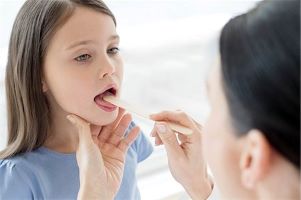Oral Yeast Infections: Yes, They’re Common – and Contagious!

The last thing you would think to talk to your dentist about is a yeast infection! But when it appears in your mouth, or in that of your child, he or she is the first person you should call… and the sooner, the better. Oral yeast infections (or “thrush”) are actually quite common, and also contagious if you’re not careful. Here’s what you need to know in case one ever sneaks up on you.
Symptoms of Thrush
While Candida, the fungus to blame for thrush, naturally occurs in the body, excessive production can result in an oral yeast infection. Telltale signs include:
- White, milky lesions along the gums, inner lining or roof of your mouth
- Bleeding or soreness if the lesions are brushed or rubbed
- Pain or difficulty swallowing food
- A dry, cotton-mouthed feeling, that may be accompanied by taste loss
- Cracking and/or redness by the corners of the mouth
Depending on what is causing the infection, symptoms and their severity may vary by individual. If thrush is not caught early enough, it can spread to other parts of the body.
Who Gets Thrush
Anyone can contract an oral yeast infection, but those with a higher risk for thrush are:
- Infants, whose developing immune systems may be unable to control fungal growth
- People with weak immune systems, either due to age or a disorder
- People who wear dentures that are not well-fitted or kept clean
- Diabetics, as sugar content in saliva can encourage the growth of yeast in the mouth
- People undergoing medical treatment that may disrupt the body’s natural balances
Risk factors aside, however, thrush can spread quite easily to individuals close to an infected person. A mother who cares for her infant while he or she has thrush, for instance, can easily catch the yeast infection through nursing or touching her child’s mouth. While older children with healthy immune systems may not be as vulnerable to catching thrush, young infants and toddlers can fall prey to an oral yeast infection by sharing toys, food and/or handling the same objects as an infected infant.
The same holds true when it comes to transmitting thrush from adult to adult. Healthy individuals are normally at low risk, but elderly individuals can spread the condition to each other simply by coming in contact with an object that has been touched with the unwashed hands of someone who has thrush.
Prevention and Treatment Of Thrush
Thrush can persist for at least two weeks, if not more, in some extreme cases. Getting rid of the yeast infection often requires a combination of both topical and oral anti-fungal medicine, though topical medication is used for infants only. If thrush is detected and treated promptly, it is possible for symptoms to clear with a milder form of treatment that involves anti-fungal lozenges and/or a prescribed mouth rinse.
In order to prevent another outbreak, however, it’s important to take several precautions to “sterilize” your home and belongings:
- Replace your toothbrush, as well as any toothbrushes located next to it
- Sanitize your dentures thoroughly with water, followed by a store-bought cleaner
- Wash or boil baby bottles and pacifiers daily, and store them in the fridge before use
- Rinse your mouth after every dose of medication, especially antibiotics and steroids
Staying on top of personal hygiene and being mindful of others can help avoid unnecessary recurrences and long-term effects to your dental and overall health.
See Your Dentist After Recovery As Well
Seeking treatment from your dentist can save you time and trouble in dealing with this stubborn condition, but due to the lengthy toll that thrush can takes on your oral health, it’s critical that you see your dentist upon recovery as well. More often than not, sensitivity and pain resulting from various symptoms can impact daily hygiene, and result in plaque buildup and tooth decay if left unaddressed. To get your oral health back in shape, be sure to schedule an exam and cleaning after you’ve fully healed.
Sources:
Oral Care: Thrush Directory. (2014). Retrieved June 8, 2015, from http://www.webmd.com/oral-health/thrush-directory